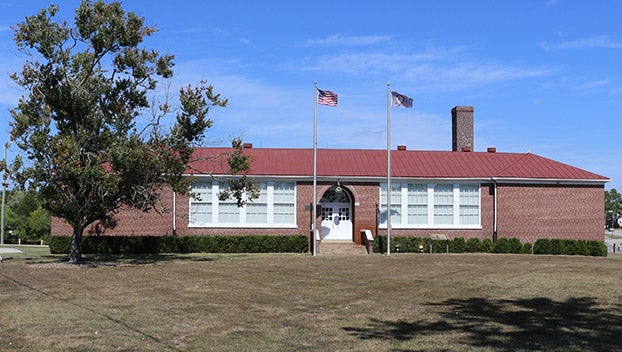Cainan Townsend: Let’s talk about Moton’s World Heritage status
Published on Thursday, August 8, 2024, 00:48

- A look inside the Moton Museum in Farmville.
Happy August to you as our primary and secondary schools prepare to reopen and our universities will follow shortly. In this August column, I would like to address some frequently asked questions and explain where we stand in the ongoing World Heritage process.
What does UNESCO and World Heritage status mean?
The United Nations Educational, Scientific and Cultural Organization (UNESCO) strives to promote the identification, protection and conservation of cultural and natural heritage around the world considered to be of outstanding value to humanity. This is enshrined in an international treaty, the Convention concerning the Protection of the World Cultural and Natural Heritage, adopted by UNESCO in 1972. The Convention defines the type of natural or cultural sites that are eligible for inscription on the World Heritage List.
World Heritage refers to places on earth that are of outstanding universal value to humanity and as such have been included in the World Heritage List in order to protect them and to preserve and enjoy them for future generations. Places as diverse and unique as the Pyramids of Egypt, the Great Barrier Reef in Australia, the Galapagos Islands in Ecuador, the Taj Mahal in India, the Grand Canyon in the USA or the Acropolis in Greece are examples of the natural and cultural sites that have been included in the World Heritage List to date.
In the United States, there are currently 25 sites inscribed on the World Heritage List, including 12 cultural sites, 12 natural sites, and one mixed site. In Virginia, there is currently one cultural site inscribed, namely Monticello/University of Virginia for its contributions to architecture.
Which civil rights websites are included?
The following civil rights sites are included: Dexter Avenue King Memorial Baptist Church, Montgomery, Alabama; Bethel Baptist Church, Birmingham, Alabama; Edmund Pettus Bridge, Selma, Alabama; Greyhound Bus Terminal, Anniston, Alabama; Little Rock Central High School, Little Rock, Arkansas; Ebeneezer Baptist Church (Heritage Sanctuary), Atlanta, Georgia; Monroe Elementary School, Topeka, Kansas; Medgar & Myrlie Evers Home, Jackson, Mississippi; Robert Russa Moton High School/Museum, Farmville, Virginia; Lincoln Memorial and Grounds, Washington, District of Columbia. Two additional sites may be added in the future if they receive National Historic Landmark designation, a prerequisite for the United States to submit World Heritage nominations. They are included in the series nomination currently being prepared. These sites are: International Civil Rights Center & Museum (FW Woolworth), Greensboro, North Carolina; National Civil Rights Museum (Lorraine Motel), Memphis, Tennessee.
What happens next in the World Heritage process?
After review and approval by the National Park Service’s Office of International Affairs (OIA), the complete dossier of serial nominations of U.S. civil rights sites is submitted to the Assistant Secretary of the Interior for approval. This is followed by an independent review by ICOMOS, the International Council on Monuments and Historic Sites, which sends its recommendation to the World Heritage Convention of UNESCO, the United Nations Educational, Scientific and Cultural Organization. Finally, States Parties will make the final decision on the inscription of the movement sites on the World Heritage List at a future annual session of the World Heritage Committee. The date when the final dossier will be completed is unknown. The preparation of this dossier is an extensive process.
How can we help (if at all)?
I want to start by saying that your help in getting us to this point has been tremendous. We never thought this would happen to us and it is in no small part thanks to your support. Special thanks to Virginia Tourism, the Virginia Department of Historic Resources, Prince Edward County and the Town of Farmville. The first way you can continue to support our efforts in the future is by supporting the museum financially when possible and supporting our programming efforts.
Our ability to continue to operate a thriving museum with programming and outreach is key to our aspiration to become a World Heritage site. The second option is to continue to stay informed about our involvement in the World Heritage process. Stay up to date by visiting our social media pages, our website, and our local news channels. Finally, there may come a time during the course of the nomination process when we ask the public to support us through legislative lobbying or other means. We will be sure to keep you updated when that moment arrives.
We will continue our work to ensure all of these historic places are recognized and the history is preserved for generations to come. Thank you for your support in helping us tell the story of Moton School and show how a group of young people changed the world.
KAINE TOWNSEND is the executive director of the Moton Museum. He can be reached at [email protected].
